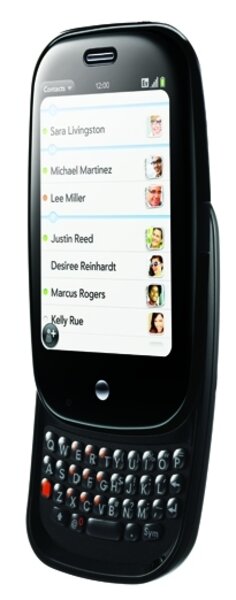Review round-up: Palm Pre
Loading...
The next major iPhone competitor hits store shelves this Saturday. Palm, which many thought was circling the drain last year, surprised everyone in January by unveiling a smart phone that recaptured the company's innovative spirit. It's hard to tell if the Pre will save Palm, but today's reviews says that it's on the right track.
The design
Pre is 3.9 inches high by 2.3 inches wide and two-thirds of an inch thick — shorter but thicker than the iPhone. The compact, slightly curvy design results in a screen that's a tad smaller than the iPhone's. It is by no means obvious that there is also a hidden, slide-out physical keyboard, a nod to consumers who don't fancy the iPhone's touch-screen keyboard. The Pre has a virtual dialing pad for tapping out phone calls, but there's no virtual keyboard to complement its physical equivalent. At times, I would have liked the option: You don't always want to slide out the keyboard. [via USA Today]
The multi-tasking features
Pre is strong in multi-tasking, the ability to have different applications open at the same time. On iPhone, you have to close and open applications to switch. Pre has a fun way of displaying multi-tasking. Apps look like a series of cards that sit side by side on the screen. To switch, drag a finger over each and tap on the one you need. When done, you close an app by flicking your finger up the screen to "throw" it closed. This is good fun. There is a limit however on how many apps you can have open at once. Depending on what you're using, the limit seems to vary from 8 to 12. [via Reuters]
The battery
Battery life between charges is relatively weak. While it's in line with competitors with a claimed five hours of talk time, and matches the iPhone's claimed five hours of Web surfing time, it offers only half the iPhone's 24 hours of continuous music playback and claims just five hours of video playback, versus seven for the iPhone. In my testing, the Pre mostly made it through the day without running out of juice. But on at least one day, it died in midafternoon, even though I was using Wi-Fi most of that day and not the power-hungry cellphone network. Unlike the iPhone, the Pre does include a removable battery. Extras cost about $50. [via The Wall Street Journal]
The price
The Pre costs $200 after rebate, with a two-year contract. (If you buy it from Best Buy instead of a Sprint store, you get the rebate instantly, without having to mail anything.) Sprint, Palm’s equally downtrodden co-star, offers a better deal than AT&T does for iPhone. For example, the $70-a-month plan (450 talk minutes) includes unlimited Internet and text messages; the equivalent iPhone AT&T plan includes no text messages at all. Sprint’s unlimited-everything plan costs $100 a month — $240 a year less than AT&T. [via NYTimes]
The final word
Despite some missing features and performance issues that make it less than ideal for on-the-go professionals, the Palm Pre offers gadget lovers and consumers well-integrated features and unparalleled multitasking capabilities. The hardware could be better, but more importantly, Palm has developed a solid OS that not only rivals the competition but also sets a new standard in the way smartphones handle tasks and manage information. [via CNET]





